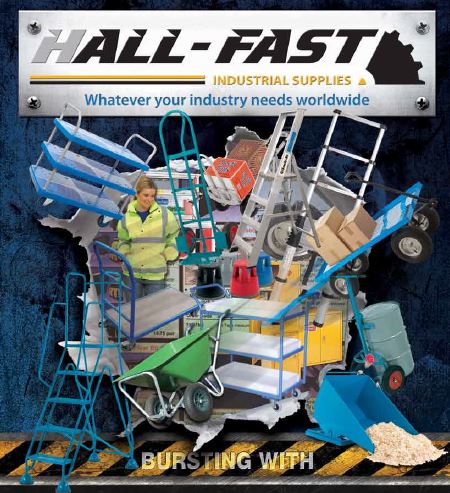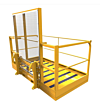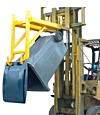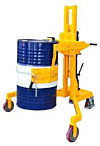
Effective classroom storage represents one of the most critical challenges facing modern educators and school administrators. With limited budgets, expanding curriculum requirements, and diverse learning materials, creating organized, accessible storage systems can seem overwhelming. However, strategic planning and smart purchasing decisions can transform chaotic classrooms into well-organized learning environments that support both teaching excellence and student engagement.
The key to successful classroom storage lies in understanding that every square foot of space serves multiple purposes. Storage solutions must accommodate traditional textbooks, digital devices, art supplies, sports equipment, and personal belongings while remaining accessible to students of varying ages and abilities. Budget-friendly approaches focus on maximizing utility while minimizing costs, creating systems that grow with changing educational needs.
Understanding Classroom Storage Challenges
Modern classrooms face unprecedented storage demands that extend far beyond traditional educational materials. Teachers must organize everything from interactive technology and specialized learning tools to personal protective equipment and sanitization supplies. The challenge intensifies when considering the diverse learning styles and accessibility requirements of contemporary education.
Space limitations compound storage challenges, particularly in older buildings where classrooms weren't designed for today's educational requirements. Many schools operate with limited square footage while attempting to accommodate larger class sizes and more diverse learning activities. This reality demands creative storage solutions that maximize vertical space, utilize underused areas, and create flexible systems that adapt to changing needs.
Budget constraints add another layer of complexity to classroom storage planning. Schools must balance the need for quality, durable storage solutions with limited financial resources. The most effective approach involves strategic purchasing that prioritizes versatility, durability, and expandability over purely aesthetic considerations.
Strategic Planning for Classroom Storage Systems
Successful classroom storage begins with comprehensive planning that considers both immediate needs and future requirements. Teachers and administrators should conduct thorough inventories of existing materials, projected acquisitions, and available space before investing in storage solutions. This assessment reveals opportunities for consolidation, identifies underutilized areas, and highlights specific storage challenges that require targeted solutions.
The planning process should involve teachers, students, and maintenance staff to ensure storage systems meet practical needs while remaining manageable over time. Student input proves particularly valuable, as they often identify accessibility issues and usage patterns that adults might overlook. This collaborative approach ensures storage solutions support learning objectives while remaining practical for daily use.
Effective planning also considers the academic calendar and seasonal variations in material requirements. Storage systems must accommodate everything from summer reading programs to winter sports equipment, requiring flexibility that supports year-round educational activities. This comprehensive approach prevents costly modifications and ensures storage solutions remain valuable throughout their lifecycle.
Maximizing Vertical Space with Smart Shelving Solutions
Vertical storage represents the most underutilized opportunity in many classrooms, offering significant capacity increases without requiring additional floor space. Shelving and storage systems designed specifically for educational environments provide the durability and adjustability required for classroom applications while remaining budget-friendly.
Wall-mounted shelving systems offer exceptional value by transforming unused wall space into functional storage areas. These systems work particularly well for lightweight materials such as books, supplies, and personal items. The key to successful wall-mounted storage lies in proper installation and strategic placement that maintains easy access while preserving classroom aesthetics.
Tall, narrow shelving units maximize storage capacity while minimizing floor space requirements. These systems work exceptionally well in corners and along walls where traditional furniture might not fit effectively. Modern educational shelving systems often include safety features such as anti-tip mechanisms and rounded edges that protect students while maintaining functionality.
Adjustable shelving provides exceptional value by adapting to changing storage needs without requiring additional purchases. This flexibility proves particularly valuable in classrooms where material requirements change seasonally or as curriculum evolves. Investment in quality adjustable systems pays dividends through extended utility and reduced replacement costs.
Creating Flexible Storage with Modular Systems
Modular storage solutions offer exceptional value for budget-conscious educators by providing expandable systems that grow with changing needs. These systems typically feature standardized components that can be reconfigured, expanded, or relocated as requirements evolve. This flexibility prevents the waste associated with purchasing fixed storage solutions that become obsolete as needs change.
Cube storage systems represent particularly effective modular solutions for classrooms. Individual cubes can be stacked, arranged, or separated to create custom storage configurations that match specific requirements. This approach allows teachers to start with basic systems and expand as budgets allow, spreading costs over multiple fiscal periods.
Rolling storage carts provide mobile solutions that adapt to various classroom activities throughout the day. These systems can store art supplies during creative periods, hold technology during digital lessons, and organize materials for group activities. The mobility aspect maximizes utility by allowing single storage solutions to serve multiple purposes.
Stackable containers and bins offer the ultimate in modular flexibility while remaining extremely budget-friendly. These systems can be mixed, matched, and reconfigured countless times without requiring additional purchases. Clear containers provide visibility while colored options can support organizational systems and classroom themes.
Utilizing Underused Spaces for Maximum Efficiency
Classroom storage efficiency often depends on identifying and utilizing spaces that are typically overlooked. Under-desk storage, behind-door organizers, and ceiling-mounted systems can provide significant storage capacity without impacting classroom flow or aesthetics. These solutions often cost less than traditional storage furniture while providing comparable functionality.
Under-desk storage systems transform unused space into valuable storage areas for student supplies, teacher materials, and personal items. These systems work particularly well for frequently used items that require easy access throughout the day. Drawer systems, hanging organizers, and slide-out trays can all be incorporated into under-desk storage strategies.
Door-mounted organizers provide exceptional value by utilizing space that would otherwise remain empty. These systems work well for frequently accessed items such as supplies, schedules, and reference materials. Over-door organizers require no installation and can be moved between classrooms as needed, making them ideal for shared spaces.
Ceiling-mounted storage systems offer significant capacity for lightweight, infrequently used items. These systems work particularly well for seasonal materials, archived projects, and backup supplies. Proper installation and safety considerations are essential for ceiling-mounted systems, but the storage capacity they provide often justifies the investment.
Multi-Purpose Furniture for Enhanced Value
Furniture that serves dual purposes provides exceptional value in budget-conscious classrooms by combining seating, work surfaces, and storage into single solutions. Ottoman storage seats, bench storage systems, and table-desk combinations maximize utility while minimizing costs and space requirements.
Storage benches offer comfortable seating while providing hidden storage for books, supplies, and personal items. These systems work particularly well in reading areas, group work spaces, and transition zones. Quality storage benches can support adult weight while providing secure storage for valuable items.
Desk-storage combinations integrate work surfaces with convenient storage areas, eliminating the need for separate furniture pieces. These systems often include built-in organizers, drawers, and compartments that keep essential items within easy reach. The integration saves space while maintaining clean, organized classroom aesthetics.
Storage tables provide work surfaces while concealing storage compartments beneath. These systems work exceptionally well for group activities, art projects, and collaborative learning. The hidden storage keeps supplies organized and accessible while maintaining clean work surfaces.
Organizing Small Items with Cost-Effective Systems
Small item organization often presents the greatest challenge in classroom storage, as traditional systems don't accommodate the diverse sizes and shapes of educational supplies. Drawer organizers, small bins, and compartmentalized systems provide cost-effective solutions that maintain organization while supporting easy access.
Drawer dividers and organizers transform standard drawers into efficient storage systems for small supplies. These systems can be customized to accommodate specific items while maintaining easy access and visibility. Adjustable dividers provide flexibility that adapts to changing supply requirements.
Small bin systems offer modular solutions that can be arranged and rearranged to match specific needs. Clear bins provide visibility while colored options support organizational systems. These systems work well on shelves, in drawers, or as standalone storage solutions.
Compartmentalized storage systems provide dedicated spaces for different types of supplies while maintaining easy access. These systems work particularly well for art supplies, science materials, and mathematical manipulatives. The compartments prevent mixing while supporting quick identification and retrieval.
Creating Student-Accessible Storage Solutions
Student accessibility represents a critical consideration in classroom storage design, as systems must accommodate users of varying heights, abilities, and ages. Low-height storage, clearly labeled systems, and easy-open mechanisms ensure all students can access materials independently while maintaining organization.
Low-height shelving and storage systems provide access for younger students while remaining functional for older users. These systems often include safety features such as rounded edges and tip-resistant designs that protect users while maintaining functionality. The accessibility they provide supports independent learning and reduces teacher workload.
Clear labeling systems help students locate and return materials correctly, maintaining organization while supporting literacy development. Picture labels work well for younger students, while text labels support older learners. Color-coding systems can supplement labeling to create intuitive organizational structures.
Easy-open storage systems accommodate students with varying fine motor skills while maintaining security for valuable items. Magnetic closures, large handles, and sliding mechanisms often work better than traditional latches for student use. These features ensure all students can access materials independently.
Seasonal Storage Strategies for Year-Round Organization
Educational materials often vary significantly throughout the academic year, requiring storage systems that can accommodate seasonal changes while maintaining organization. Rotating storage systems, seasonal bins, and archive areas provide cost-effective solutions that adapt to changing requirements.
Rotating storage systems allow teachers to keep current materials accessible while storing seasonal items in less convenient locations. These systems might involve rotating bins, seasonal closets, or shared storage areas. The key lies in developing systems that make rotation efficient and maintaining clear organization throughout the process.
Seasonal storage bins provide dedicated spaces for materials that are only used during specific periods. These systems work well for holiday decorations, seasonal science materials, and special event supplies. Clearly labeled seasonal bins maintain organization while supporting efficient setup and breakdown of special activities.
Archive storage systems provide long-term storage for completed projects, reference materials, and historical supplies. These systems often utilize less convenient locations such as high shelves or storage rooms. The key to successful archive systems lies in clear labeling and regular review to prevent accumulation of unnecessary items.
Digital Storage Solutions for Modern Classrooms
Modern classrooms require storage solutions that accommodate both traditional materials and digital devices. Charging stations, device storage, and cable management systems provide essential support for technology integration while maintaining organization and security.
Device storage systems must balance accessibility with security, allowing easy access for authorized users while preventing theft or damage. Lockable cabinets, charging carts, and individual device storage provide various levels of security depending on specific requirements. These systems often include charging capabilities that maintain device readiness.
Cable management systems prevent the chaos that often accompanies technology integration while maintaining safety and organization. These systems might include cable trays, cord organizers, and power management solutions. Effective cable management supports both functionality and safety in technology-rich classrooms.
Charging stations provide essential support for device-based learning while maintaining organization. These systems range from simple power strips to sophisticated charging cabinets that manage multiple devices simultaneously. The investment in quality charging systems pays dividends through extended device life and reduced management complexity.
Collaborative Storage for Shared Spaces
Many modern educational environments feature shared spaces that require storage solutions supporting multiple users and activities. Collaborative storage systems must accommodate diverse needs while maintaining organization and accountability across different user groups.
Shared storage systems often require more robust security and organization features than individual classroom storage. These systems might include user identification, checkout systems, and enhanced durability features. The investment in quality shared storage systems pays dividends through extended life and reduced management complexity.
Mobile storage solutions work particularly well in shared spaces, allowing resources to be moved to areas where they're needed most. These systems support flexibility while maintaining organization across multiple user groups. Rolling carts, portable bins, and modular systems provide various levels of mobility.
Budget-Conscious Purchasing Strategies
Maximizing storage value requires strategic purchasing approaches that balance quality, functionality, and cost. Volume purchasing, phased implementation, and quality assessment ensure storage investments provide maximum value over their useful life.
Volume purchasing often provides significant savings on storage systems, particularly when multiple classrooms or schools coordinate their purchases. Bulk ordering benefits extend beyond simple cost savings to include consistent quality, coordinated delivery, and simplified management. Many suppliers offer educational discounts that further enhance value.
Phased implementation allows schools to spread storage investments over multiple budget cycles while building comprehensive systems. This approach prevents the need for large upfront investments while ensuring storage systems remain coordinated and functional. Starting with essential storage and expanding as budgets allow creates sustainable improvement.
Quality assessment ensures storage investments provide value over their useful life. Durable construction, appropriate materials, and proven performance in educational environments justify higher initial costs through extended service life and reduced replacement needs. Industrial and commercial equipment designed for institutional use often provides better long-term value than consumer-grade alternatives.
Maintenance and Longevity Considerations
Storage system longevity depends on proper maintenance, appropriate use, and quality construction. Regular cleaning, hardware inspection, and user education ensure storage investments provide maximum value over their useful life.
Regular maintenance prevents small problems from becoming major failures while extending system life. This might include tightening hardware, cleaning surfaces, and replacing worn components. Establishing maintenance schedules and providing necessary supplies ensures storage systems remain functional and attractive.
User education ensures storage systems are used appropriately and maintained properly. Students and staff who understand proper use and care will extend system life while maintaining organization. Training programs and clear guidelines support proper use while preventing damage.
Quality construction significantly impacts storage system longevity and value. Systems designed for educational use typically feature enhanced durability, safety features, and appropriate materials. The investment in quality construction pays dividends through extended service life and reduced maintenance requirements.
Safety Considerations in Classroom Storage
Student safety represents the paramount consideration in classroom storage design, requiring systems that eliminate hazards while maintaining functionality. Proper installation, appropriate materials, and safety features ensure storage systems protect users while supporting educational objectives.
Proper installation prevents tip-overs, falls, and structural failures that could injure students or damage property. This includes appropriate anchoring, weight distribution, and clearance requirements. Professional installation often justifies its cost through enhanced safety and performance.
Appropriate materials ensure storage systems remain safe throughout their useful life. This includes non-toxic finishes, rounded edges, and appropriate weight limits. Educational storage systems often include enhanced safety features that justify their cost through reduced liability and improved performance.
Safety features such as soft-close mechanisms, rounded edges, and tip-resistant designs protect users while maintaining functionality. These features often add minimal cost while providing significant safety benefits. The investment in safety features pays dividends through reduced injury risk and enhanced user confidence.
Environmental Considerations and Sustainability
Sustainable storage solutions provide long-term value while supporting environmental education objectives. Durable construction, recyclable materials, and energy-efficient manufacturing support sustainability while providing functional storage solutions.
Durable construction reduces replacement needs while supporting sustainability objectives. Systems designed for extended use prevent waste while providing consistent performance. The investment in durable construction pays dividends through reduced replacement costs and environmental impact.
Recyclable materials ensure storage systems can be responsibly disposed of at the end of their useful life. Many modern storage systems include recycled content while remaining fully recyclable themselves. This approach supports environmental education while providing functional storage solutions.
Energy-efficient manufacturing reduces the environmental impact of storage systems while often providing cost savings. Many manufacturers now offer storage solutions produced using renewable energy and sustainable practices. These systems support environmental objectives while providing functional storage solutions.
Technology Integration in Storage Solutions
Modern educational storage must accommodate technology integration while maintaining traditional functionality. Charging capabilities, device security, and cable management provide essential support for digital learning while maintaining organization.
Charging integration eliminates the need for separate charging stations while maintaining device organization. Many modern storage systems include built-in charging capabilities that support various device types. This integration simplifies management while maintaining functionality.
Device security protects valuable technology while supporting educational use. Lockable storage, individual device compartments, and user identification systems provide various levels of security. The investment in device security pays dividends through reduced theft and damage.
Cable management prevents the chaos often associated with technology while maintaining safety and organization. Integrated cable management systems support clean installation while preventing damage and safety hazards. These systems often include power management capabilities that further enhance functionality.
Professional Display and Organization Systems
Educational environments benefit from professional display systems that combine storage functionality with presentation capabilities. These systems support both organization and educational objectives while maintaining professional appearance.
Display storage systems combine storage functionality with presentation capabilities, supporting both organization and educational objectives. These systems might include bulletin boards with storage, display cases with organization features, and presentation systems with material storage. The dual functionality provides exceptional value while maintaining professional appearance.
Organization systems support both storage and display objectives while maintaining ease of use. Clear organization systems help students locate materials while supporting educational objectives. These systems often include labeling, color-coding, and visual organization features that enhance both functionality and appearance.
Working with Educational Suppliers
Successful storage implementation often depends on working with suppliers who understand educational requirements and can provide comprehensive support. Hall-Fast represents the type of established supplier that many primary and secondary schools rely on for their storage needs, offering nationwide and worldwide supply capabilities with flexible purchasing options.
Educational suppliers often provide specialized knowledge and support that enhances storage system value. This might include space planning assistance, installation support, and ongoing maintenance services. The investment in supplier relationships pays dividends through enhanced system performance and reduced management complexity.
Quality suppliers offer comprehensive product ranges that support coordinated storage systems while providing consistent quality and service. Access to diverse brands and product lines ensures schools can select the most appropriate solutions for their specific requirements while maintaining budget constraints.
Supplier support services often include training, maintenance, and expansion assistance that enhances storage system value. These services support successful implementation while reducing management complexity. The investment in supplier relationships pays dividends through enhanced system performance and reduced long-term costs.
Measuring Storage Success and ROI
Successful storage implementation requires measurement and evaluation that demonstrates value and identifies improvement opportunities. Space utilization, organization effectiveness, and user satisfaction provide key metrics for storage system success.
Space utilization measurements demonstrate how effectively storage systems use available space while supporting educational objectives. These measurements might include storage capacity, accessibility, and efficiency metrics. Regular measurement supports continuous improvement while demonstrating value.
Organization effectiveness measurements evaluate how well storage systems support educational objectives while maintaining organization. These measurements might include retrieval time, maintenance requirements, and user satisfaction. Effective measurement supports system optimization while demonstrating value.
User satisfaction measurements evaluate how well storage systems meet user needs while supporting educational objectives. These measurements might include student feedback, teacher satisfaction, and administrative assessment. User satisfaction measurements support continuous improvement while demonstrating system value.
Conclusion: Creating Sustainable Storage Solutions
Budget-friendly classroom storage requires strategic planning, smart purchasing, and ongoing management that balances cost, functionality, and educational objectives. Successful storage systems provide long-term value while supporting educational excellence and student engagement.
The key to successful classroom storage lies in understanding that storage systems serve multiple purposes beyond simple organization. They support educational objectives, enhance safety, and contribute to the overall learning environment. Investment in quality storage systems pays dividends through enhanced educational outcomes and reduced management complexity.
By implementing comprehensive storage strategies that utilize all available space, accommodate diverse needs, and support long-term objectives, educators can create organized, functional classrooms that support both teaching excellence and student success. The investment in effective storage systems provides benefits that extend throughout the educational community while supporting sustainable budget management.
Strategic partnerships with suppliers like Hall-Fast, who understand educational requirements and can provide comprehensive support, ensure storage investments provide maximum value while supporting educational objectives. Through careful planning, smart purchasing, and ongoing management, budget-friendly storage solutions can transform classrooms into organized, efficient learning environments that support educational excellence.












